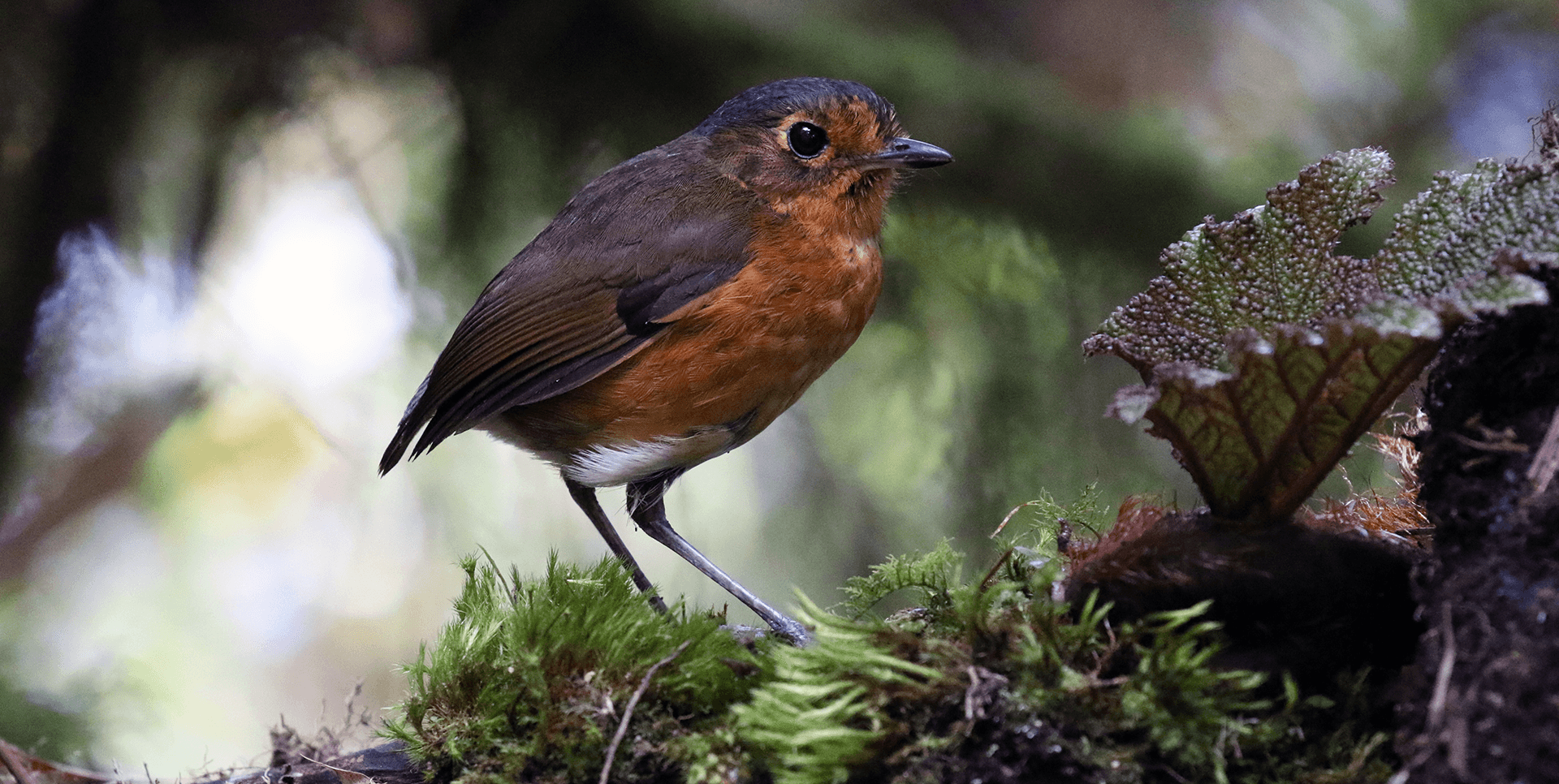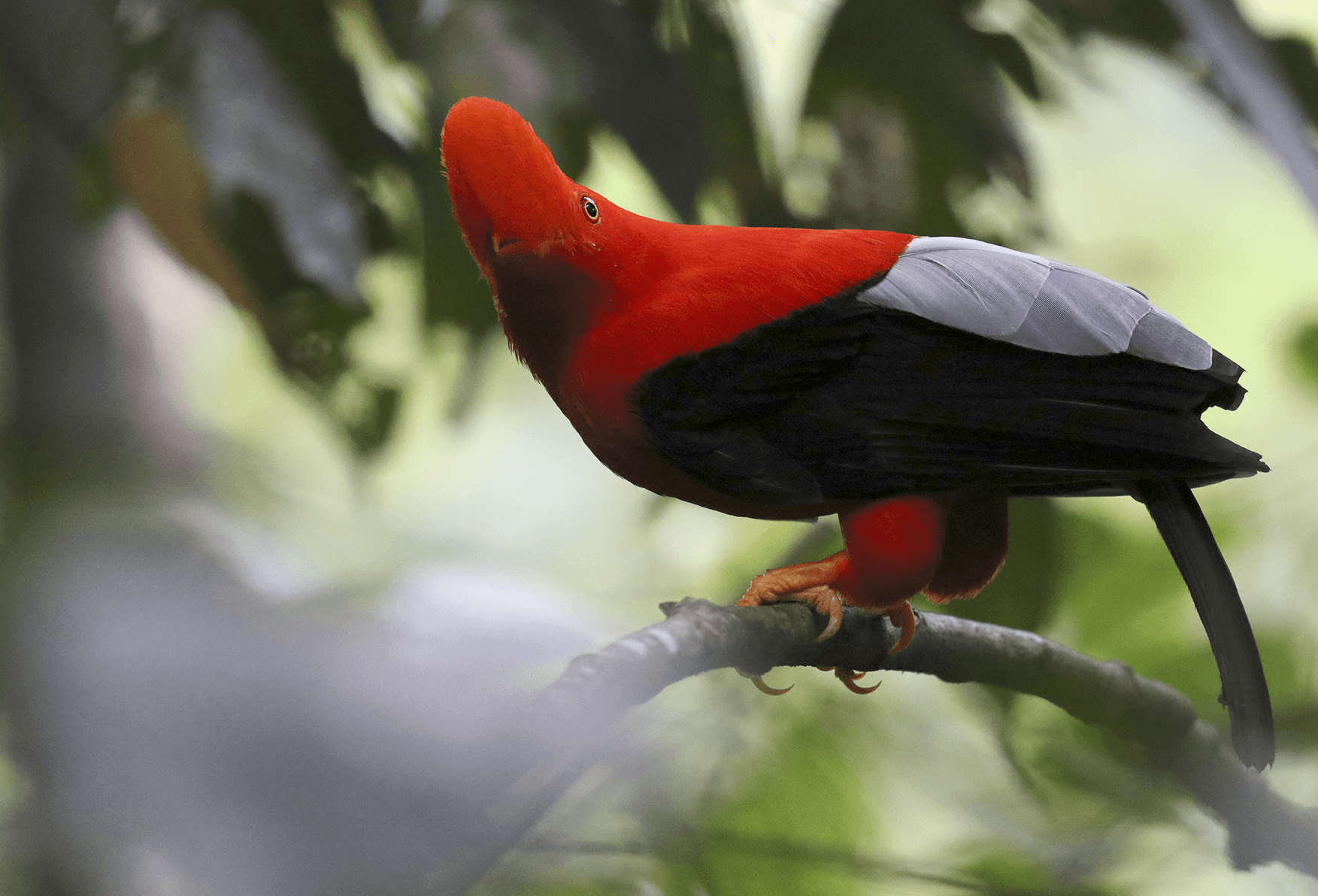Your gateway to antpitta heaven!
- By Robin Smith
- •
- 14 Sep, 2018
- •
Welcome to Rio Blanco reserve
What is it with antpittas?
Whether it is thanks to their skulking and shy habits, varied subtle but beautiful plumes, their undoubted yet intangible presence or most likely the combined effect of these factors, antpittas hold a special place in the heart of many visiting birders to the neotropics and in Colombia Rio Blanco is the antpitta capital! This pristine cloud forest reserve lies just outside the scenic Andean town of Manizales in Colombia’s central Andean mountain range. Thanks to a series of earthworm feeding stations, a single morning’s birding can result in no less than 5 species of this skulking family, including the endemic Brown-banded, the near-endemic Bicoloured, the striking Chestnut-crowned, and the diminutive Slate-crowned.
A day here often starts with a visit to one of these ‘stations’, before gently walking up a forested track while taking in myriad species of other birds until reaching the next antpitta hot spot. Photographic opportunities are excellent throughout the day, and lunch is taken at the reserve’s small guesthouse, where several hummingbird feeders attract jaw- droppers such as Long-tailed Sylph, Tourmaline Sunangel, Andean Emerald and Sparkling Violetear. In the afternoon our attentions often turn to the higher slopes where a differing suite of birds are possible and after nightfall, we can try for various nocturnal species such as White-throated Screech-owl.

We visit Rio Blanco on our extensive Golden Birding Trail tour, which offers our guests access to an incredible suite of Colombian endemic and near-endemic species throughout the eastern, central and western Andes, as well as the Magdalena Valley endemics and a host of fabled Chocó specials! Some of the many highlights of this Colombia birding tour include Bogota Rail, Buffy Helmetcrest, Beautiful Woodpecker, White-mantled Barbet, a visit to an Oil Bird cave and an incredibly active Andean Cock-of-the-rock lek, Yellow-eared Parrot, Chestnut-bellied Flowerpiercer, Toucan Barbet, Gold-ringed Tanager, Black-chinned Mountain-tanager and over 50 species of Hummingbird. And, of course, a select band of antpittas at Rio Blanco which often steal the show from some of the most colorful and dazzling birds on the planet!
We think our 16-day Golden Birding Trail itinerary is one of the most comprehensive Colombian birding itineraries possible and is perfect for any discerning birders first or second time visit to the country – it will be led by an experienced Wild About Colombia professional bilingual guide and if there are 5 or more guests, a second guide with join the party. However, we limit our groups to 8 guests. If you would like to learn more, please do get in touch with the Wild About Colombia team (contact details below), or visit the tour page where you can download the full itinerary and tour details. Here is the link:
www.wildaboutcolombia.com/the-golden-birding-trailA 16-day tour is too long for me. Do you have a shorter tour?
Not to worry! We also offer an 8-day Colombia birding tour that visits the world famous Santa Marta range with its incredible suite of endemic birds that can be found nowhere else on earth! A few of the key targets includeSanta Marta Sabrewing, Santa Marta Parakeet, Santa Marta Foliage-gleaner, Santa Marta Screech-owl and Black-backed Thornbill!And whilst this tour doesn't visit Rio Blanco, you'll still get the chance to see antpittas, including the endemic Santa Marta Antpitta! Check out the link below:
https://www.wildaboutcolombia.com/birding-in-paradise
I want to do both tours. Is that possible?
Absolutely! Because we know you might only visit Colombia once (there are after all some other good places to bird around the world ;) we have specially designed the above two tours so that you can do them back-to-back. Full dates and prices can be found on the respective tour pages on the links above.



How to reach the Wild About Colombia team
Should you have any questions on this post, or our Colombia birding tours in general, please don’t hesitate to get in touch info@wildaboutcolombia.com
We are in the process of developing an email distribution so that new blog posts can be delivered to your inbox. But, in the meantime, if you enjoyed this post, please do visit and like our facebook page; https://www.facebook.com/wildaboutcolombia/ as we will inform you of new posts through this social media channel – as well as posting loads of amazing birds and other wildlife from our adventures in Colombia.
Did someone say something about Colombia mammal watching tours!?
From all of us, thank you for reading this post, and happy birding and wildlife watching wherever you are in the world!
Best wishes,
The Wild About Colombia team



